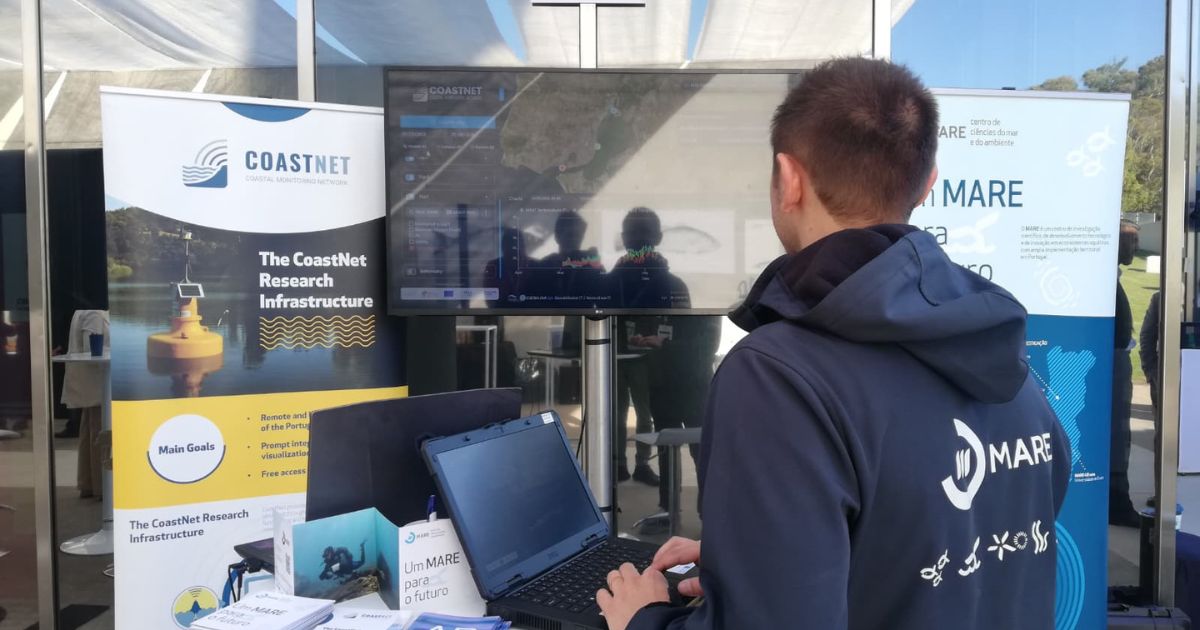MARE participates in water innovation event with CoastNet and LIFE INVASAQUA
MARE attended the event “The Path to Innovation,” organized by Águas do Tejo Atlântico on September 25, at the Alcântara Water Factory. The meeting brought together companies, researchers, and public entities to discuss innovation, sustainability, and collaboration for the future of water. 
MARE at the Faculty of Sciences of the University of Lisbon highlighted the national CoastNet infrastructure, which integrates satellite data, in-situ environmental and biological measurements, and acoustic telemetry. MARE at the University of Évora drew attention to the problem of the zebra mussel (Dreissena polymorpha), an invasive species that threatens water supply systems and hydraulic infrastructure, as part of the LIFE INVASAQUA project.
“CoastNet is innovative because it combines physical-chemical, biological, and acoustic data in an open geoportal, accessible to companies, managers, and researchers. This openness is rare and highly valued,” explained João Marques, a researcher at MARE/ARNET at FCUL. The geoportal is being improved as part of the CoastNet2030 project to allow better public access to the data it compiles.
The audience was also able to hear sounds from species such as the charroco, corvina, and corvinata-real, recorded in the Tagus estuary. "People are always surprised when they realize that fish communicate through sounds. We use artificial intelligence to automatically identify these species in continuous recordings, which allows us to study the evolution of populations over the years," added Manuel Vieira, also from MARE/ARNET at FCUL. These studies will be further improved and expanded with the installation of new hydrophones in the Tagus and Sado rivers under the CoastNetInfra project.
The MARE-UÉvora exhibitor focused on the threat of the zebra mussel, a species detected in Portugal in 2019 and responsible for tens of millions of euros in damage in Spain. Awareness-raising materials and results from the LIFE INVASAQUA project, dedicated to disseminating information and preventing invasive alien aquatic species in the Iberian Peninsula, were presented.
In this context, the importance of continuous monitoring and preventive actions was highlighted. Early action before these species spread is the most effective way to reduce costs and impacts.
"The price to pay for prevention and early detection processes, with rapid action, is much lower than that of acting when the problem is already established. At MARE-UÉvora, we have been conducting innovative research on the mechanisms of dispersal of these species and providing monitoring services in the south of the country," explained Pedro Anastácio, a researcher at MARE/ARNET and professor at the University of Évora.
Participation in the event reinforced MARE's role as a strategic partner in addressing water challenges. With more than 600 researchers, the center combines fundamental and applied knowledge, technology, and innovation, supporting the sustainable management of aquatic ecosystems and the infrastructure that depends on them.
Texto by Vera Sequeira
